Things have been fairly quiet lately on the protest/riot front. There were some clashes in Los Angeles dealing with the Wi Spa transgender incident (covered in my podcast) but other than that not really anything notable until this past weekend. Sunday, 8/22 was the one year anniversary of a big 2020 Portland clash, when a crew of right wingers held a pro-law enforcement rally downtown in Terry Shrunk Plaza. Antifa showed up, the cops didn’t, and it was a pretty violent affair.
The same pattern repeated this year, except I think it overall went much better for the right wingers. My earlier critique still stands, but there were several intriguing things about this year worth highlighting. Read the entire two Antifa AARs linked below because there’s tons to learn, but I’m going to fisk notable points from them that are particularly illuminating.
First Rose City Antifa AAR(link)
Antifascists had been discussing and making preparations for August 22nd for months, but most of the formal organizing behind the publicly announced antifascist event didn’t begin until early August, when a coalition was formed between many antifascist groups in the region.
The coalition put out a call to rally at 1 PM at Salmon Springs Fountain, on the waterfront in downtown. With most of the park fenced off from Naito parkway (the street running alongside it), Salmon Springs was chosen because it had the most easily accessible entrances and exits. A lot of time was spent by organizers scouting and preparing this spot to maximize safety and options for the 22nd.
One of the big points in my Sunday critique was that the right is original, the left is iterative. This means different strengths and weaknesses, but some of the strengths of the left are evident in the quote above.
For starters, a formal after action review is something I’ve almost never seen the right do, and it’s a big part of how the left is able to adapt and evolve their tactics. It’s much harder to bullshit yourself about your performance when you have to articulate what you did and put it in writing, and it’s also much easier to share the lessons learned amongst your peers when you can just spam a link.
Takeaways:
A network of people are involved that regularly work together.
A significant amount of pre-event planning is involved.
They pay close attention to space and geography in both offensive and defensive senses, with an eye towards choke points and funnels.
On the morning of August 22nd, Haley Adams announced that the nationalist rally was to be held in a K-mart parking lot in Parkrose, a neighborhood in NE Portland. When our crews headed out to downtown, the coalition had not seemed to reach consensus on whether it wanted to stay at Salmon Springs fountain on the waterfront, or have antifascists move to NE Portland to oppose the white nationalists gathering there…
…Defending the waterfront made absolutely no sense. The waterfront wasn’t under threat from fascists. Parkrose was, so that’s where we needed to be. We heard concerns that opposing the fascists would be “splitting the crowd”, but we knew that the only place where numbers mattered was where the fascists were… We spent about 90 minutes at the waterfront talking to different crews about this, and the most common response was “we’ll go if everyone else does”…
…We were becoming increasingly frustrated at the rumors and passivity that we saw in much of the crowd. What good is a black bloc of several hundred if it isn’t willing to confront the fascists? We started to leave the waterfront, having only talked to a few groups about a spokescouncil.
For illustration, here’s a map showing the distance between Salmon Springs Fountain and the K Mart:
This is an interesting excerpt, because we see some glaring weaknesses reveal themselves.
Firstly, we seem the limitations of the consensus decisionmaking model under pressure. It may work well in the planning stages, but it is simply not a quick or easy thing to do in the field. Antifa groups talk about “be water”, flowing around obstacles, and the importance of autonomy, but that only works because the major decisions are made before the day of action. If events depart from the scope of previous planning, they simply cannot adapt quickly. A drastic, last minute change in rally location was enough to cause tremendous disruption from which antifa was not able to recover.
One point that’s easy to overlook because it isn’t explicitly stated here, is the implication that antifa has a shorter radius of action than the patriot group. They’re concerned that the patriots will load up in a convoy and come downtown, but they also are frustrated because they simply cannot transport their entire group the same way as easily. This is because antifa tends to be urban dwellers, and urban dwellers are not only less likely to have cars, but also more likely to leave them at home if they do and take public transportation (or walk) to the rally point. Based on my experience, once they’ve assembled at a location antifa has a radius of action of around 2 miles at most. Moving 10 miles is simply not possible in large numbers for them without previous preparation.
Another thing that happens here is the bystander effect. There are senior, prominent antifa members and supporting infrastructure that guide events, but there’s no real concrete chain of command or defined organization that can get people quickly oriented to new circumstances when they go this badly off script. There was apparently some nasty pushback from others that felt coerced into leaving with them, one of the pitfalls of working with anarchists that don’t like to be told what to do.
I’m not privy to the planning on the patriot side, but what happened here (probably inadvertently) is something called a fast transient. You probably haven’t heard of fast transients before, but you’ve probably heard of Col. John Boyd’s OODA loop model, which is built on the fast transient concept. This all originated with aerial dogfighting, so here’s a relevant passage from the link that explains it:
Even if the MiG could turn inside the F-86, this is a steady-state advantage. It only holds while both planes are in a constant turn. The F-86 pilot, though, could change directions more quickly and easily than his opponent.
As the maneuvers progressed, the MiG pilot would be lagging further and further behind the developing situation. Eventually he would be countering the last maneuver of the F-86, while the F-86 is already doing something else.
In other words, the F-86 pilot could gain the initiative by executing fast transients – changes in the tactical situation that forced his opponent to respond; or he could respond more quickly than his opponent could change things up.
The MiG could outturn the F-86, so it had an advantage as long as they kept turning in the same direction. However, due to cockpit layout and control design it took the MiG pilot comparatively longer to respond once the F-86 switched directions. This is a very good illustration of what happens when one side can iterate along one course of action faster, but the other side can generate entirely new solutions and orient to novel situations faster. This is what happened here in Portland.
Takeaways:
Antifa is flexible and adaptive as long as events are within the limits of previous experience and planning, anything outside of that leads to either paralysis or splintering.
Antifa tend to be urban and have a fairly short radius of action, they simply can’t travel far in the city and stay cohesive. Patriot groups tend to have a higher proportion of people driving in, which means they’re often far more mobile.
With a rally/protest organizer and a few key people doing the planning, patriot groups can take far more initiative while maintaining cohesion and effective. Antifa tends to be comparatively more cohesive as long as they stay within their plan, however.
Paint proved to be an effective way to keep the fascists at bay and it caused some permanant damage to their gear. Fire extinguishers filled with paint were especially effective against fascists wearing gas masks, goggles and visors, blocking their vision completely. Without useable eye protection, they weren’t able to withstand pepper spray. Umbrellas also worked well to block paintballs and other less-lethal rounds. Cans of seltzer made for very effective projectiles: a good weight to throw, and they burst when they hit, preventing them from being thrown back.
Paint to permanently destroy protective gear and force vulnerability to pepper spray is a tactic we saw used last year, predominantly against law enforcement.
The drink cans was also used to great effect in last year’s Grant Park attack, which I have previously covered in a separate analysis.
One photographer, Maranie Staab, who openly collaborates with Proud Boy friendly videographer Ford Fischer, became increasingly agressive and threatened to get people arrested. She walked up to the front of the bloc with her phone camera pointed at people’s faces, and her phone was knocked out her hand by a LaCroix can and taken lol. She tried to get her phone back, and was covered in pepper spray and paint. Her phone was smashed, and some photographers with her had their camera lenses painted over.
There’s been a ton of blowback about this in leftist spaces, particularly since she was called a “slut” during the attack and the whole misogyny aspect has them tied up in knots. This also isn’t the first time this sort of thing has happened, when lefties in black bloc lose their cool they often attack anyone with a camera that’s not explicitly allied with them. August 27, 2017 in Berkeley is a good example of how badly that sort of thing can blow up in their face.
Staab is a fairly openly lefty photographer as well, which illustrates just how partisan a journalist would have to be for them to allow them to embed and operate with a bloc. Keep that in mind in the future when you you watch video taken from press operating within a black bloc.
You can watch the attack below.

A second Antifa AAR came out yesterday, here’s some good excerpts but again, reading the entire thing is worth it. The author is incredibly assmad about what happened:
The outrage seemed to stem from a lack of control over us. Fuck that. We’ll go where we want to go, and we follow no orders….There are always people like this in blocs and protests, and I fucking hate them…Yes a medic goes to you, but you should not endanger the fucking medic, jesus fuck. (I am angry at literally everything that happened that Sunday, bite me.)..Any crew that sees Fischer at anything should smash his shit…
Hahahahaha anyway be sure to read it because it’s incredibly entertaining.
Some of us were ahead of the main bloc and thus north of the intersection, but most of the bloc refused to cross Skidmore and 122nd fully. Why? Because Proud Boys outflanked us. A tiny shitty section of Skidmore curved north a half-block east and was another entrance to the parking lot. Ten-ish PBs took that route and outflanked the bloc. Thankfully the bloc noticed it, formed a really good umbrella line, and began to retreat…“Why are we retreating? Why are we retreating?!” Someone else responded “Because they’re scary!”
This is a crucial point. Fash tend to be men, and all of their combatants are, and they’re usually taller, heavier, and quite macho and very scary men. They were afraid of antifa, and drunk as fuck, but that has never made a large man less scary, especially when they have unofficial legal protection. Most of the bloc crowd was on the smaller side, many of us are skinnier, and most of us are not macho.
Getting outflanked by a smaller group of physically larger people that are willing to press the advantage causes them to break and run. Good to know.
It is pretty clear that we lost, and fuck anyone who says we won…I do not think anyone who went to Parkrose on Sunday will tell you that we won, even if we think we made the right choice.
Basically all accounts agree that they lost. They had almost 500 people turn out, but still got tricked into splitting their forces and getting subjected to defeat in detail.
Speaking of authority: There are two things I have alluded to, people getting “sent” places (mainly support, i.e. medic and logistics people), and information being withheld. Apparently of the three ambulances/evac vans, the two that stayed downtown were not autonomous, but under some sort of hierarchy. Medics and other evacc people are, too. There was some sort of centralized chat annoyed that people weren’t doing as they were told and sticking to the plan.
The consensus decisionmaking model lefties love assumes a level of equality that just can’t exist in reality, because some people will just be more talented, experienced, or charismatic than others. In practice what has happened is the development of a dedicated core leadership cadre, which causes friction with the more devoted/misanthropic anarchist factions. Read both AARs in their entirety, it’s worth it.
The following is an good tweet thread that echos many of the points and illustrates their frustration and demoralization:
Note how they explicitly reject optics in favor of a focus on tactical effectiveness, which has often proven to not be such a wise trade over the last five years. In fact, the two most lopsided tactical “wins” in that time (Charlottesville 8/12/17 and Berkeley 8/27/17) ended up being strategic disasters for the victor. Disproportionate force rarely presents well on video.
Closing thoughts:
My original points in Sunday’s critique piece stand. The right absolutely needs to build the support network and infrastructure that the left has. I would not be surprised if yet more criminal charges are filed, given the fact so many right wingers there have been doxxed and had their actions Sunday filmed by local press.
Looking like the good guys does matter, and it’s important that people control themselves and focus on actions that can be articulated as defensive with limited (or no) context.
The left has shorter radius of action in the field, because they don’t come with the same number of available vehicles. A dramatic change of location may be enough to encourage some of the black bloc to split off and seek a confrontation, thus making themselves open to defeat in detail.
The consensus decisionmaking model they ostensibly use has nodes of command and control in practice. There is something of a leadership cadre, but this can be controversial amongst the bloc members and causes issues if they’re forced to push too hard. It’s often more about coordinated influence than giving direct orders.
The left is slower to reorient to drastic changes in the situation, partly because of the clunky decisionmaking style.
Attacking journalists is one of the most reliable ways to have the narrative turn sharply against you.
Antifa doesn’t like mainstream press at the best of times, when they’re rattled the likelihood of them beating the hell out of a journalist skyrockets.
Undercover work in antifa is becoming more popular amongst journalists and patriots. Video being released not only documents and exposes what happened, but it also undermines trust amongst the bloc. Drew Hernandez in particular did good work in Portland last weekend:

Thanks for reading and sharing, I hope you found this useful!
————————————————————————
Please join my Telegram channel to keep up with the community:
You can support my work here:
Cashapp: $eesmith4
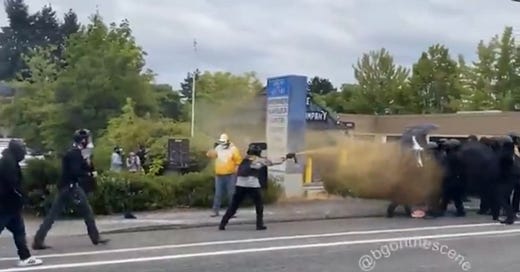



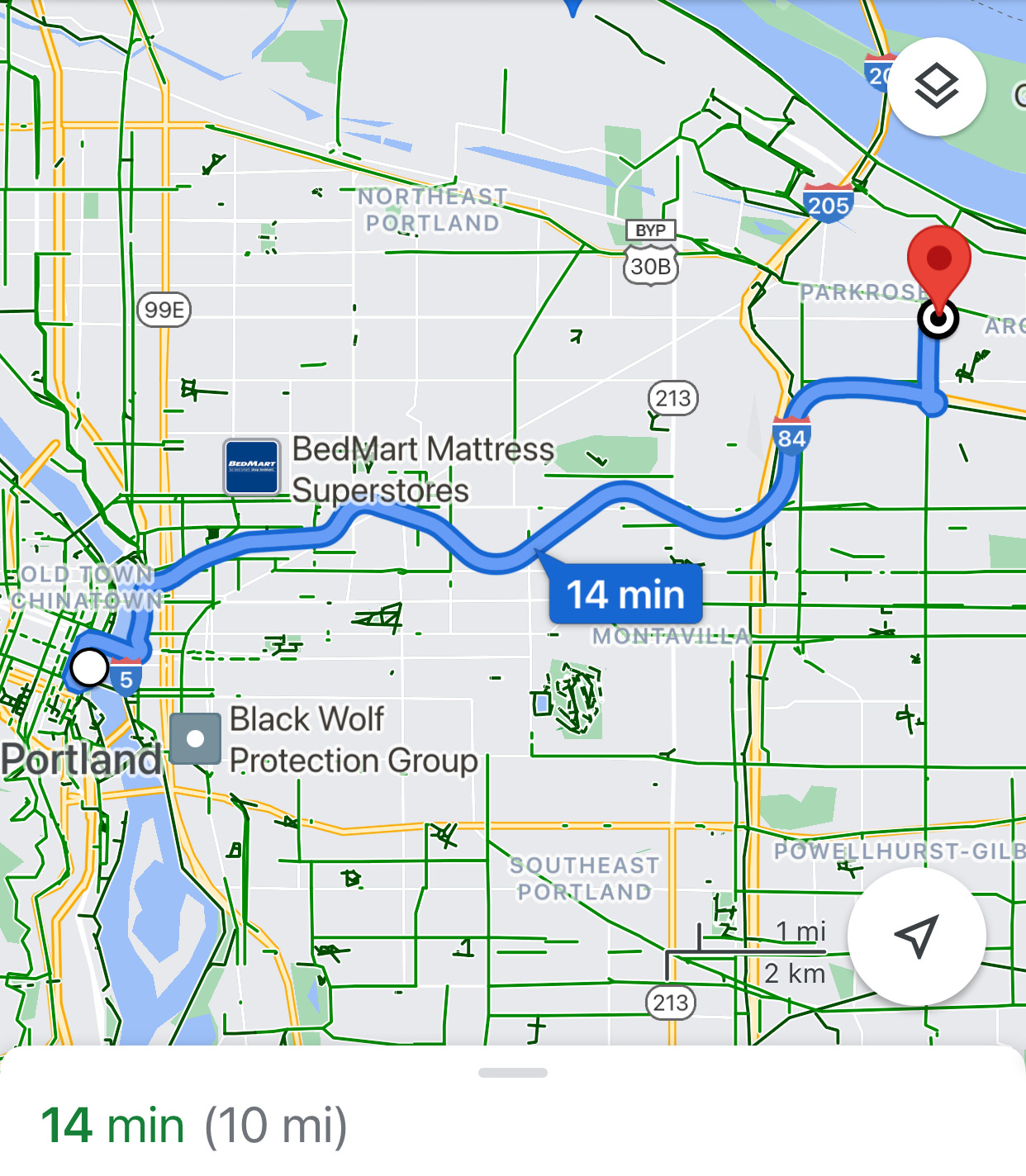
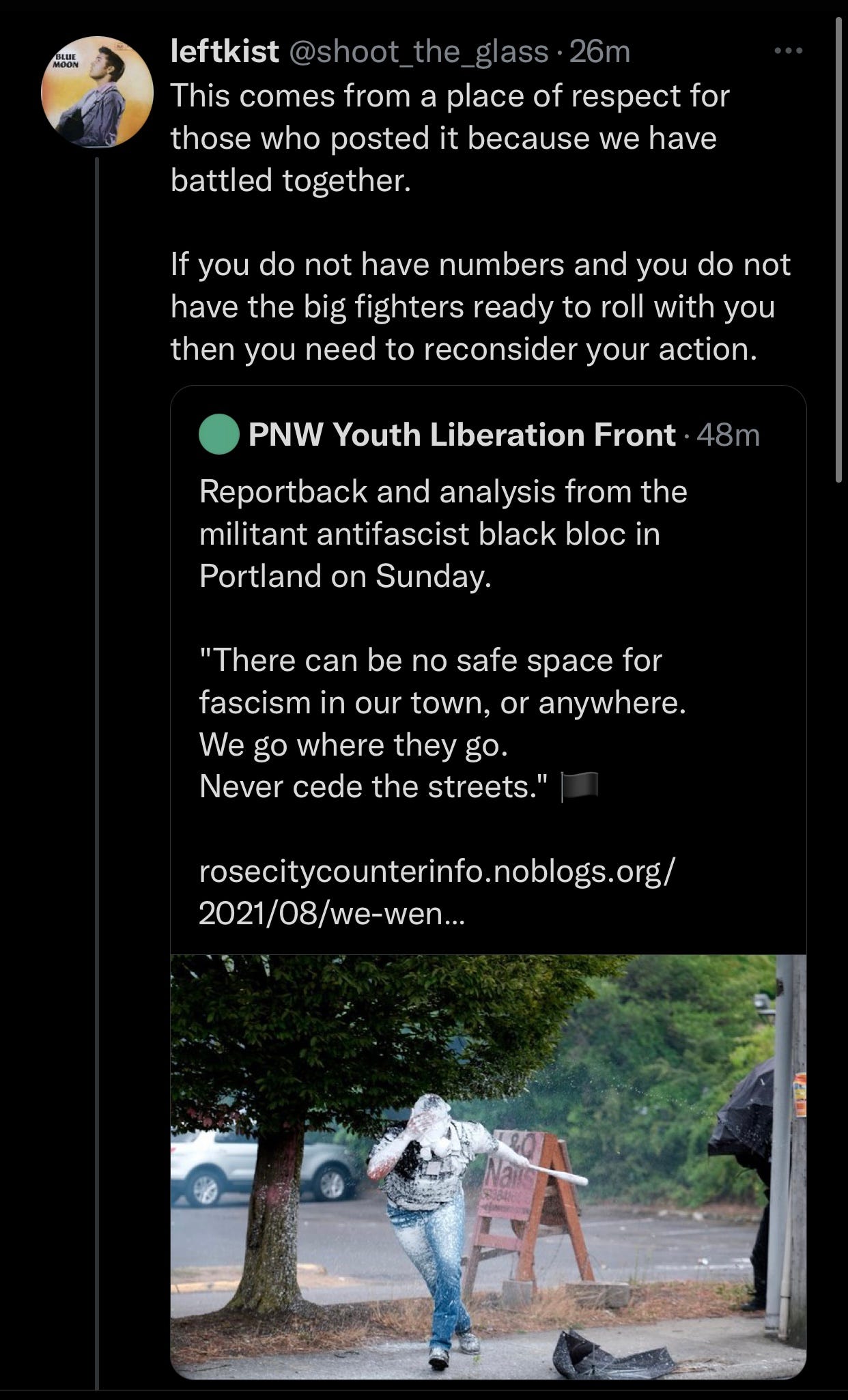
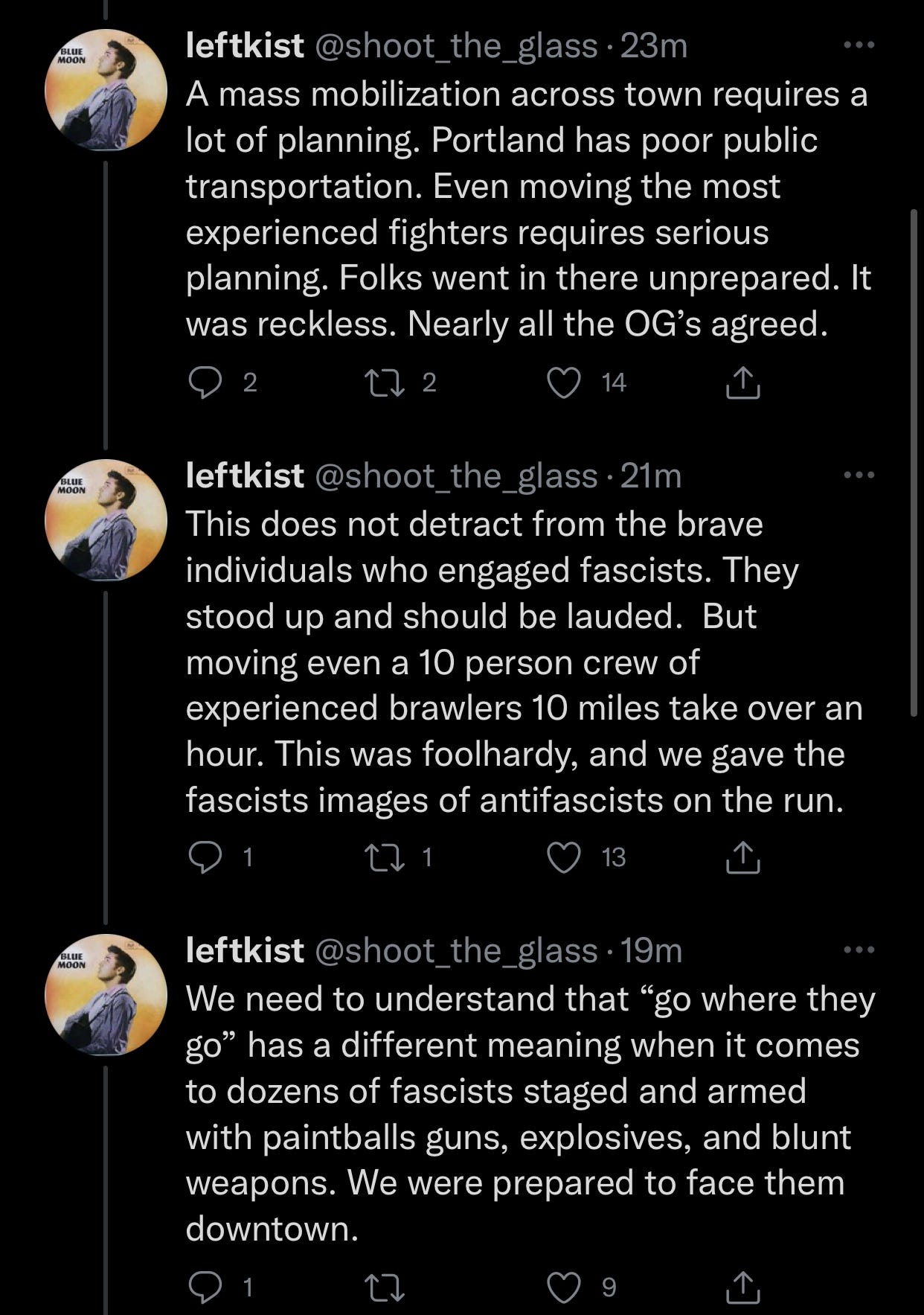
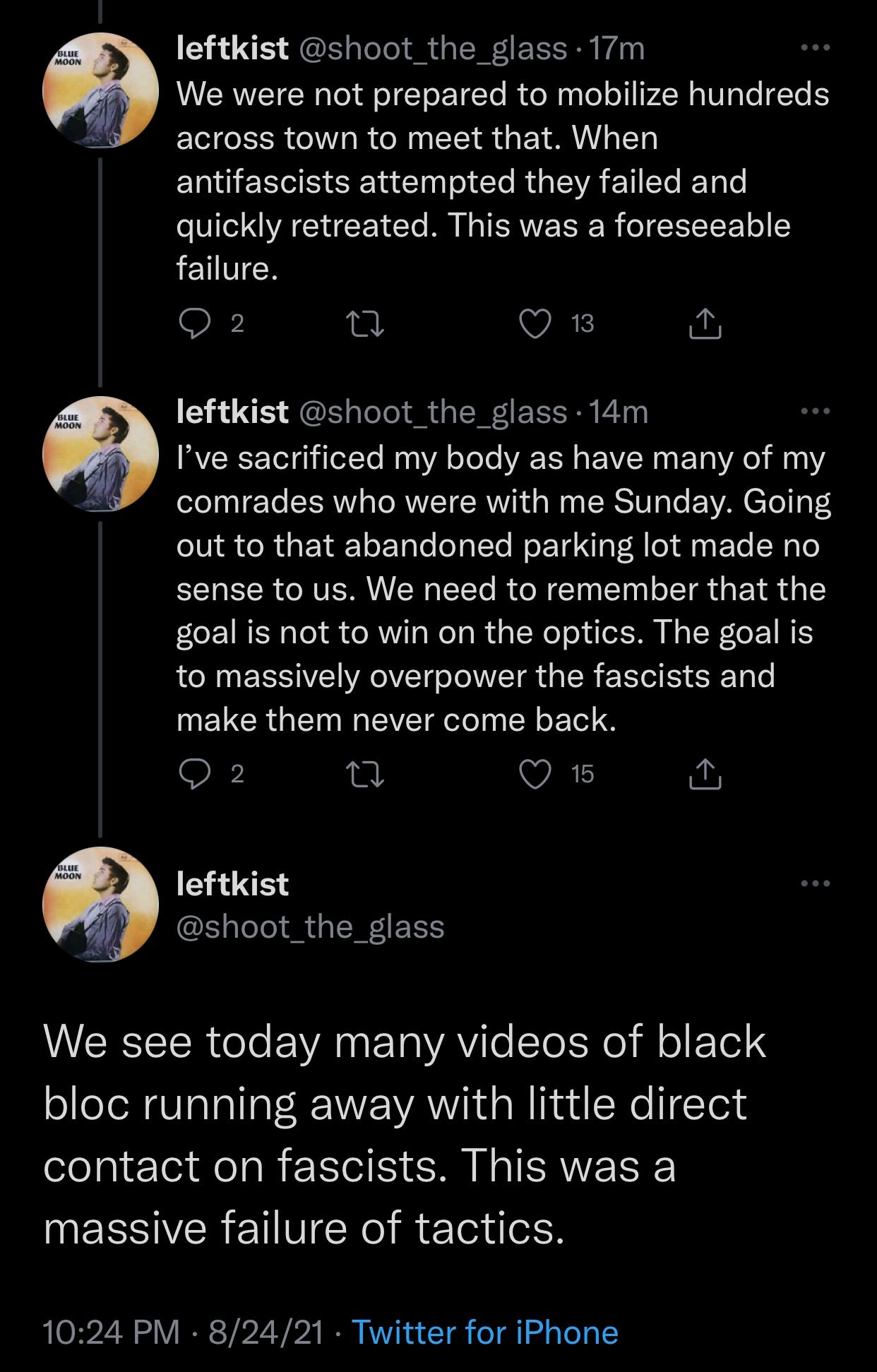

Good write up Erin! X87😎
I was wondering what that large group of "cyclists" were doing down there Saturday, now I know.